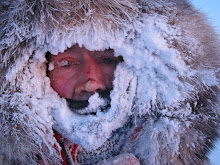I have had requests for this general info....so here is the first of a few that will hopefully add context to our expedition:
In the past 18 months as I have turned my focus to learning about, and trying to have a deeper experience of the two polar regions, at the North and South extremities of our planet. During this process it became apparent to me how little I knew, but also that I was no less knowledgeable than ‘the average person’, who have a very abstract idea of these Polar regions are like.
The North Pole, or more correctly, the Geographic North Pole, is the single point ‘at the top’ of the earth around which the earth rotates. Basically if you stand on the North Pole it would be like standing in the centre of a spinning wheel, you would not move, everything spinning around you. The South Pole, also the Geographic South Pole, is the equivalent ‘centre of spin’ point directly opposite the North Pole, down under. If one can imagine a axle going through the centre of the earth connecting these two Pole points, then that would be the axle about which the ball of the earth rotates. This is what fundamentally defines these two Pole points, but interestingly that is almost where the similarity ends.
As a start, think of a donut. For the Arctic and North Pole, a good way to visualize the area is to see that the countries of Canada, USA, Siberia, Russia, Greenland, Finland, Norway, and Iceland form the ring of the donut that virtually encapsulates the Arctic Ocean, which is then the ‘hole’ in centre of the donut. (As the map of the Arctic below shows, the Greenland Sea between Greenland and Norway is actually a large ‘gap’ in the donut ring, but lets not complicate things.) The Arctic Ocean is generally included as the 5th of the five major Oceans of the world. The ‘gap’ to the Atlantic via the Greenland Sea means that sometimes it is not included as an ocean on its own, but rather part of the Atlantic)

On the South Pole side, we also have a ‘donut’, but an exact opposite version of the Arctic one: The donut ring is ocean (The Southern Ocean) and the centre ‘hole’ is a huge piece of land, called Antarctica, the so 7th of the seven generally recognised continents of the world. (Antarctica is 30% larger in area than Europe, 50% of the area of Australia, and more than 50% of the size of North America. In other words a huge place!) The map below shows how the continent fills the hole, with the South POle in the centre. Interestingly, Antarctica inot a stand alone, sovereign country, nor is it owned by any other country. It is unique in this respect and is 'managed' by 'the world' through the Antarctic Treaty. Over 10 countries have a claim on areas of Antarctica, and thee are the demarcations on the map below. Interestingly Australia has a claim for in excess of 40% of the continent.

So essentially, the South Pole is land locked and sits ‘in the middle’ of this vast continent which is encircled by uninterrupted ocean flowing in a westerly direction around it. The North Pole is situated in the middle of the vast Arctic Ocean, that is circled by the northern most countries of the world.
Because both poles at different times of the year, become 'the furthermost places on earth from the sun', they are very cold year round. Due to the inverted difference of their ‘donuts’, the North Pole has a maritime climate, and the South Pole a desert climate. Ie The Arctic Ocean is a very humid and ‘wet’ place, with most of the ocean being frozen year round. On the other hand, Antarctica is the driest place on earth, the worlds largest, driest and coldest desert. However over thousands of years ice has built up on the continent, and the land is virtually 100% covered in ice, more than 2000 metres thick in most places. The ice has laid itself down, by largely filling in the valleys between the mountains and leaving a relatively flat topography of ‘buried mountains’. This ice is ‘permanent’ and stable as it has a continent as its foundation. Since 1909, with Amundsen being the first to reach the South Pole, explorers and adventurers have been challenged by the trek, or part of the trek across the continent of Antarctica to the South Pole. Because of this stability and this relatively flat topography, walking to the South Pole, while very cold, windy and dry is fairly predictable. A trip to the North Pole is very different, and is considered a significantly more difficult and uncertain journey……
…It essentially involves crossing half an ocean:……and that’s where the fascination and challenge for me lies… Oceans are very dynamic environments, having currents, winds, tides, and a liquid foundation, and then to add another dimension this one is largely frozen over year round.
I’ll finish this Post at this point, and leave the next one for a bit more detail on The Arctic and what we can expect along the way. I apologise for those that found the above simple description insulting to their more extensive knowledge of the areas, but I just wanted to try and ensure ‘All’ had a similar context for what is still to come….


No comments:
Post a Comment
Note: Only a member of this blog may post a comment.